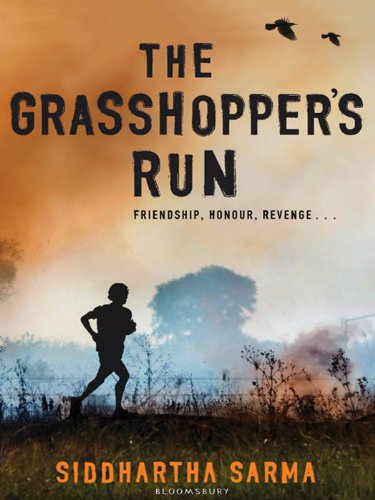The Grasshopper’s Run
(1)
1944, Assam. World War II is raging, and the Japanese have swept through Burma towards India. The psychopathic Japanese general, Moti, has ordered the massacre of everyone in a small Ao Naga hill village. Among the victims is the chief’s grandson, Uti.
Gojen, Uti’s best friend, is at a British school in Calcutta when he hears the news from his kinsman, Meren, who shows him a piece of bloodstained paper with Japanese writing. Gojen takes it to his headmaster, who shows it to the wily Kenneally of the Intelligence Corps. A name comes up: General Moti. Now that he knows the perpetrator, Gojen’s one thought is to avenge Uti’s murder, and he absconds. Together with a small group of Naga tribesmen, he embarks on a gruelling and perilous journey into the jungles of Assam.
I found it impossible to put this book down. Sarma writes with a terse but elegant simplicity which pulls no emotional punches. We are right inside Gojen’s head as he combats fear and danger and finally comes face to face with the sadistic, power-crazy Moti. But Sarma is equally good at getting inside the heads of the bluff headmaster or Colonel Kenneally, both alert to the ramifications of the Great Game; or the worried Japanese General Sato, powerless to control Moti who has the ear of the top brass. There are no black and white stereotypes here; all the characters are fully three-dimensional.
The Grasshopper’s Run has the depth and punch of John Boyle’s The Boy in the Striped Pyjamas, but there are also several nods to Kipling’s Kim, a book I much admire. It’s as if Sarma has taken Kipling’s baton, made it his own, and run with it. Bloomsbury has found a top quality writer here, and I cannot recommend the book too highly.
(2)
At first, I had mixed feelings about The Grasshopper’s Run. Set in the height of World War II, it is a very interesting and gripping time. Writing about an unfamiliar culture can be difficult get across, but Sarma did an excellent job of it.
The first two chapters were confusing as he kept switching from calling the characters (mainly the protagonist) by either their first or their last names; however, after a while, I cottoned on. The book was incredibly detailed about everything, and he’d obviously done a lot of research. I thought the characters were built very well. Oddly enough, I didn’t get very attached to Gojen, the main character, but I don’t think I was supposed to. Surprisingly, I understood Mori the most because the details of his past life made him very realistic, and I certainly understood why he behaved as he did.
I was confused by the use of technical words, e.g., parts of guns that I had never heard of before. However, it did educate me in a lot of ways about tribal Indian lives. The plot was very exciting and compelling, it really got me hooked. Suitable for 14+.










